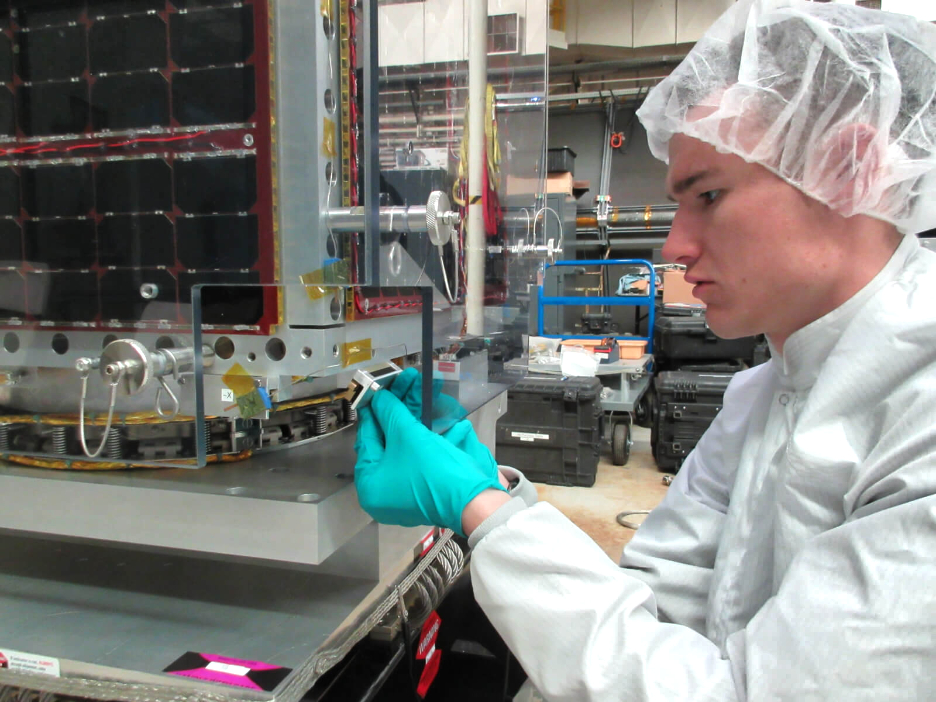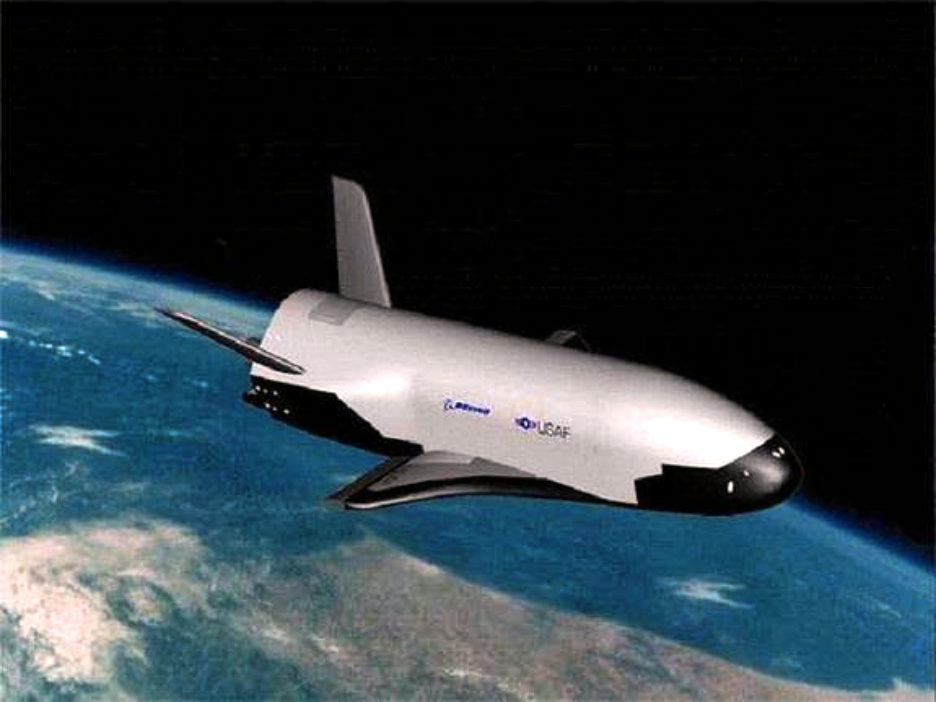
Work on the FalconSAT-8.
Photo is courtesy of the U.S. Air Force Academy.
A satellite built by U.S. Air Force Academy cadets will launch into space on May 16 aboard the X-37B, Orbital Test Vehicle sponsored by the Department of the Air Force Rapid Capabilities Office and built by Boeing — this is the first time a satellite built and designed by cadets will catch a ride into space aboard the X-37B.

The U.S.A.F.’s X-37B Spaceplane.
FalconSAT-8 will carry five experimental payloads, and members of the Cadet Space Operations Squadron will operate FalconSAT-8.
There’s little doubt that the work by cadets will have an effect on the new Space Force, which opened for business in December and is designed to maintain and enhance the competitive edge of the Defense Department in space. Eighty-six cadets in this year’s graduating class commission into the Space Force.
Good noted that few undergraduate programs allow their students to work on flight hardware and design and build their own flight components. Cadets are given hands-on work that allows them to get a feel for real engineering on real projects.
Lt. Col. Dan Showalter, assistant astronautics professor at the Academy, said that as novel as this mode of transportation might be, the purpose for cadets in the school’s space program is the same as it was when the school’s space program began in the 80s. FalconSAT-8 is an educational platform for cadets. He added that several cadets, including Cadets 1st Class Reagan Good and Claudio Yambao, traveled to Cape Canaveral, Florida to deliver, test, and integrate FalconSAT-8 with the X-37B. This is like an engineering internship – experimental technologies for the Air Force are flown to evaluate their performance on-orbit,
The Academy’s space program consists of aerospace experts, mechanics and engineers. The FalconSAT program serves as an academic platform for an array of aerospace industry and DOD experiments. Cadets design spacecraft and integrate payloads in the Space Systems Research Center with faculty support.
FalconSAT-8 is the Academy’s capstone undergraduate systems engineering course managed by the school’s Astronautics department.
Cadet Yambao said the space program’s motto, “Learning Space by Doing Space,” means cadets get to experience the postgraduate engineering world on campus and entails building and testing components of a spacecraft and understanding how it plays a role in the entire space engineering community.

Cadets and instructors in the U.S. Air Force Academy’s FalconSAT program pose for a group photograph at the Academy. They were directly involved in building a salivate scheduled to launch into space May 16 aboard the X-37B Orbital Test Vehicle, sponsored by the Department of the Air Force Rapid Capabilities Office and built by Boeing. This is the first time a satellite built and designed by cadets will catch a ride into space aboard the X-37B. Photo is courtesy of the U.S. Air Force Academy.
